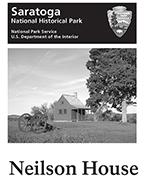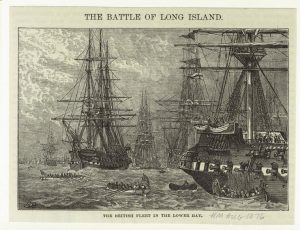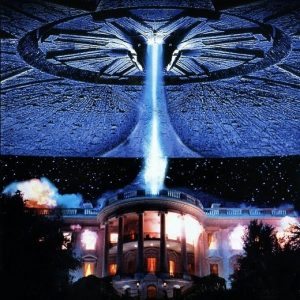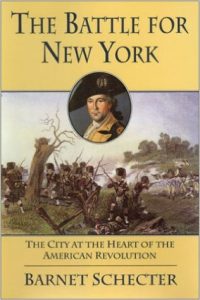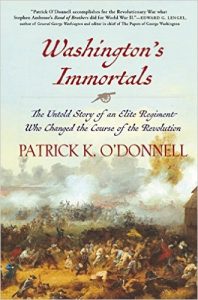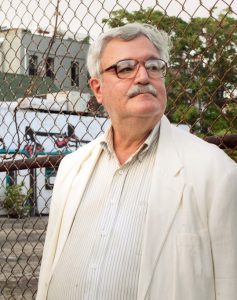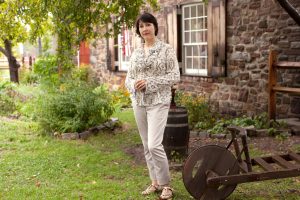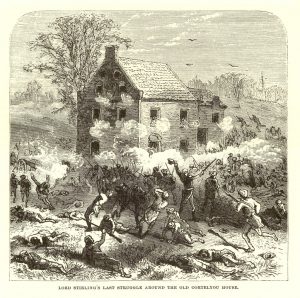
This August 28-31, the joint American Association for State and Local History (AASLH) and International Coalition of Sites of Conscience Annual Meeting will convene in Philadelphia to learn, engage in fellowship, tour, and address this year’s theme, What Are We Waiting For? Depending on the work at hand, this theme serves different purposes. It is a call to action, a challenge to embrace difficult work now. It is also a cautious whisper, a reminder to slow down and get it right. Although different issues warrant different responses, consideration of the question is essential in light of the challenges our field, communities, nation, and planet are facing.
I am unable to attend this conference. However, I was able to review the abstracts of the sessions online. (Again, it would be nice if all conferences did this.) Below are some of the sessions which I think to be of interest. This list excludes workshops, tours, plenary talks, and networking sessions. For additional information on both the organization and the conference go to aaslh.org.
I. Civics
One of the more unusual activities for a history conference was the not so usual opportunity to witness a naturalization ceremony offsite. Probably by coincidence, some of the sessions related to this very subject as well as examples of what historical organizations can do in their own communities.
Naturalization Ceremony
AASLH’s Law and Civics Affinity Committee has arranged for Annual Meeting attendees to observe a naturalization ceremony at 10:30 am in the Ceremonial Courtroom at the James A. Byrne United States Courthouse, located one block from Independence Hall. Approximately 100 applicants for citizenship from 40 different countries will be naturalized. The presiding judge and special guests, including one of the new citizens, will make remarks. New citizens will be greeted with American flags and voter registration forms. Naturalization ceremonies are very moving occasions and mark one of the most important days in a new citizen’s life. AASLH appreciates the willingness of the United States District Court for the Eastern District of Pennsylvania and the United States Citizenship and Immigration Services in making space available for AASLH attendees.
Naturalization ceremonies are not a daily occurrence and are not performed in every community. And the history conference organizers do not select the day of the ceremony. Still it is something to consider for history conferences which do occur in metropolitan areas to at least inquire about such ceremonies at that locale. Sometimes a history organization can take matters into its own hands as these two presentations show.
From Polling Places to Naturalization Ceremonies: A Practical Guide to Civic Engagement
Looking for ways to engage your community and attract new audiences? Consider hosting major civic events, such as naturalization ceremonies, or serving as a polling site! Panelists will discuss how-to questions while exploring the benefits that civic partnerships have brought their organizations.
Chair: Doria Lynch, United States District Court for the Southern District of Indiana, Indianapolis, IN; Charles Hyde, Benjamin Harrison Presidential Site, Indianapolis, IN; Kerry Sautner, National Constitution Center, Philadelphia, PA
Make Your Museum a Gateway to Citizenship
The New-York Historical Society has successfully launched The Citizenship Project, preparing over 1,000 legal permanent residents annually for naturalization. Museums across the nation are perfectly positioned to engage with their local immigrant community and become a gateway to citizenship. This session offers guidance in launching citizenship education utilizing museum collections.
Chair: Samantha Rijkers, New-York Historical Society, New York, NY
Many communities have birthday celebrations. Wouldn’t that be a great time to welcome newcomers into the community with a naturalization ceremony? Include the current citizens as well. Why limit naturalization classes to immigrants? How about providing an opportunity for current citizens to renew their civic vows as Americans by participating in an annual civic event…to be followed by a bus and/or walking tour of the historic sites in the community!
Related to this civic duty of naturalization is linking the new citizens of the municipality to the old.
Bringing the Past into the Present: Immigrant Storytelling through Museum Tours
The Global Guides program hires immigrants and refugees to interpret artifacts while sharing stories about life in their home countries. Staff will discuss program implementation, while guides will demonstrate stories and describe tours. Attendees will gain insights on supporting guides with lived experience to share cultural stories that help to decolonize the museum.
Chair: Ellen Owens, Penn Museum, Philadelphia, PA; Yaroub Al-Obaidi, Penn Museum, Philadelphia, PA; Moumena Saradar, Penn Museum, Philadelphia, PA; Kevin Schott, Penn Museum, Philadelphia, PA
“Decolonize” is a politically correct term that is best avoided unless you want to unnecessarily risk antagonizing people or are speaking in a politically correct context. On the other hand, “sharing” is a far more productive and constructive term to use without making moral judgements if your goal is for the immigrants of today and the immigrants of the past to become part of a single community.
II Cooperation and Collaboration
Everybody talks about organizational cooperation and collaboration but no one does it. Here are some examples of organizations that did. These examples should serve as a guide for what can be done elsewhere. One example consists of a 48-organization effort to promote tourism in a single county. A second refers to the challenge of overcoming the “silo” syndrome of go-it-alone because there is no time to do anything else. A third refers to collaboration. These sessions illustrate the benefits of attending the conference in person. That way one can hear first-hand how these organizations actually did it, asks questions, and speak with the presenters privately perhaps even while breaking bread.
More Sustainable Historic Sites through Heritage Tourism: Case Study Camden County, NJ
Learn about a new effort in Camden County, NJ, to organize forty-eight historic sites and history organizations for a regional heritage tourism effort. Help us problem solve about motivating historic sites to promote and thus sustain sites for visitation and inspiring volunteer-led sites to open for regular public hours.
Chair: Donna Ann Harris, Heritage Consulting Inc., Philadelphia, PA; Bonny Beth Elwell, Camden County History Alliance, Camden, NJ; Dorothy P. Guzzo, New Jersey Historic Trust, Trenton, NJ; Dr. Jack O’Byrne, Camden County Historical Society, Camden, NJ; Linda Shockley, Lawnside Historical Society, Lawnside, NJ
The Whole Really Is Greater than the Sum of Our Parts: How History Organizations Collaborate to Expand Impact
While we may value the concept of collaboration, many of us continue to operate our organizations in silos—viewing colleagues as competitors and considering neighbors’ requests a distraction from “our” mission. Join our panelists to explore how to increase your organization’s impact, community engagement, visibility, diversity, and sustainability through strategic collaboration.
Chair: Karen L. Daly, Dumbarton House, The National Society of The Colonial Dames of America, Washington, DC; Gretchen M. Bulova, Historic House Museum Consortium of Washington, DC, Alexandria, VA; Tuomi Forrest, Historic Germantown, Philadelphia, PA; Catherine Nuzum, The National Society of The Colonial Dames of America, Washington, DC
Small Museums, Big Aspirations: Engaging Community, Co-Creating, and Collaborating
Directors of several small museums, including an Underground Railroad site and a traditional historic house museum, will share how their organizations revitalized their sites and increased their public reach. From curating an ambitious exhibit to changing to a women’s history center, each used collaboration to achieve their goals.
Chair: Brian J. Failing, Aurora Regional Fire Museum, Aurora, IL; Jillian Allison, Center for Colorado Women’s History at the Byers-Evans House Museum, Denver, CO; Alison Costanzo, St. Charles History Museum, St. Charles, IL; Sarah Richardt, Lombard Historical Society, Lombard, IL
III Issue Sessions
By “issue sessions,” I am referring to specific and unique presentations within the conference about a particular topic that is not part of the typical history organization activity.
In the first example, the invitation-only session is to plan for the American Revolution semiquincentennial. At some point, sooner rather than later, every history organization conference should address this anniversary.
250th Anniversary Meeting
AASLH’s U.S. 250th Anniversary task force will be convening a meeting of its sub-committees for a half-day retreat at the Friends Center. Over the past several months, five committees have focused, respectively, on how the field can use the 250th anniversary in 2026 as an opportunity to advance the relevance of history, diversity and inclusion, collections, funding, and education at history organizations. This convening will offer committees an opportunity to share their preliminary findings and begin charting next steps. For more information, contact John Marks, Senior Manager, Strategic Initiatives, AASLH, marks@aaslh.org.
The following session on slavery is one that should be of interest to many history organizations. There should be no doubt that how an organization handles this topic as it relates to its own organization and community will become increasingly important. Again this is a session where the abstract is insufficient. One wants to know how the presenters do what they do and to speak to them in person.
No Time Like the Present: Engaging Descendant Communities in the Interpretation of Slavery
Does your museum confidently discuss slavery? Does your site have meaningful relationships with descendants of enslaved people associated with it? The National Summit on Teaching Slavery presents a rubric of best practices for addressing slavery and engaging descendants that’s grounded in three principles—multi-disciplinary research, positive relationships, and integrated interpretation.
Chair: Shawn Halifax, Charleston County Park and Recreation Commission, Charleston, SC; Christian Cotz, James Madison’s Montpelier, Orange, VA; Brent Leggs, National Trust for Historic Preservation, Washington, DC; Ahmad Ward, Mitchelville Preservation Project, Hilton Head Island, SC
A third example involves dealing with American Indians or more specifically the Indian Nation that once may have resided on the very land where your museum is now located. Previously I have written about the programs on the Stockbridge Indians now located in Wisconsin who periodically return to Stockbridge, MA where they once resided. How to promote collaboration between these tribal cultural centers and distant historic museums is a challenge that has to be addressed on the local level. For example, if you interested in the Battle of Oriskany in New York preceding the Battle at Saratoga, it would be beneficial to visit the Oneida and Seneca Nations sites since they participated on opposite sides of this bloody battle as they remember to this very day.
A Discussion of Tribally Driven Research and Programs
This session asks attendees to consider the need for and benefits of truly community-engaged scholarship and programming with American Indian tribes. What does it look like when research and programming is driven by and for American Indian tribes? How can we shift away from call-and-respond engagement wherein museums or universities drive the need and ask for tribal response or blessing? How are sustainability, collaboration, audience impact, and learning changed when tribal communities see a community benefit every time they work with our museums and historic sites? Come and hear from representatives who have engaged in projects that have benefited and seated power with tribal communities.
Chair: Natalie Wadle, Shawnee Tribe Cultural Center, Miami, OK; Ben Barnes, Shawnee Tribe, Miami, OK; George Ironstrack, Miami University, Oxford, OH; Shannon Martin, Ziibiwing Center of Anishinabe Culture and Lifeways, Mt. Pleasant, MI
At some point, historic sites may need to come to grips with global warming. I am referring to climate change not as a global phenomenon but as to what it might mean in your own community. Obviously, the circumstances will vary by location. It may mean growing certain plants in your garden will become difficult, the bugs you have to deal with will change or be around longer, land may be at risk, artifacts may require more care if exposed, etc. One may anticipate more and more sessions on this topic in the years to come.
Helping Your Community Decide Which Historic Places to Protect From the Impact of Climate Change
Share your ideas about how historical organizations can help their communities come to grips with the prospect of losing valuable historical resources to the impact of climate change, and ensure that decisions about what to protect and what to let go are made in a fair and equitable manner.
Chair: David Glassberg, University of Massachusetts Amherst, Amherst, MA
IV Imperiled Promise
A few years ago, the National Park Service (NPS) commissioned a study on history within its organization. That study entitled “Imperiled Promise” became the basis for a series of blogs. In those blogs, I noted that similar concerns affect state-owned sites as well. Since the publication of the report, little has been to address the issues raised. The NPS is more in a survival mode than a development one. Perhaps that situation will change. In the meantime, all the issues raised in the report apply to state, county, and municipal owned-sites especially when the needs of recreation trump those of history.
History In Our Parks Roundtable
Many parks and recreation agencies manage museums and historic sites, and still others hold rich cultural and historic resources within nature centers or other facilities. How do park staff meet the challenges of caring for these resources while operating within a system that is not geared towards heritage preservation? This roundtable will discuss AASLH’s formation of a History in Our Parks Task Force to address those unique needs. AASLH members who are interested in serving on the task force are especially encouraged to attend.
Chair: Shawn Halifax, Cultural History Interpretation Coordinator, Charleston County Park & Recreation Commission, Charleston, SC
This somewhat lengthy overview previews some of the sessions which will be offered at the AMERICAN ASSOCIATION FOR STATE AND LOCAL HISTORY 2019 CONFERENCE beginning August 28. If any of you are attending, please considering reporting on the sessions that you go to.



